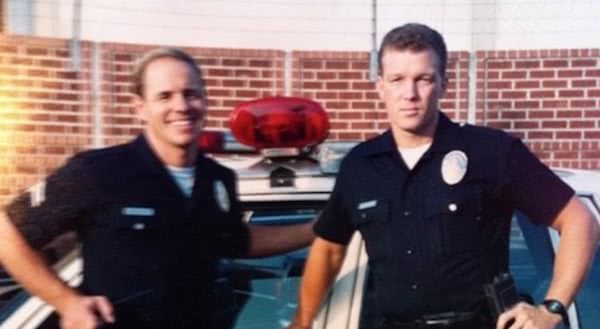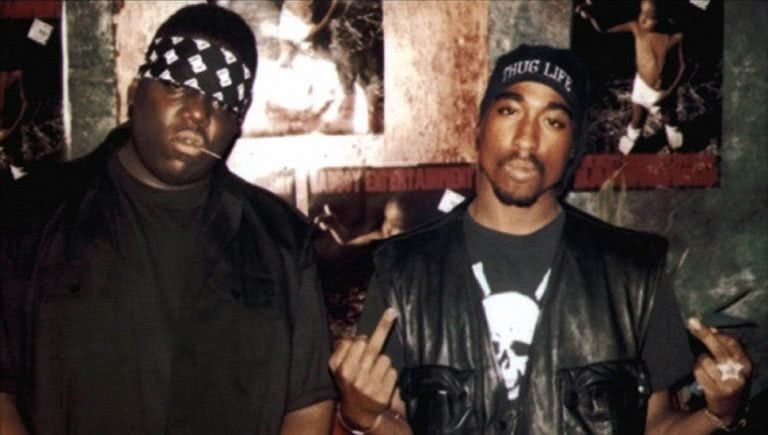On September 7, 1996 and March 9, 1997 respectively, Tupac Shakur and Christopher Wallace – better known as Notorious B.I.G – were murdered in cold blood. 2Pac was shot aged 25 while in Las Vegas while Wallace, just 24, was killed in LA, both the victims of drive-by shootings from unknown assailants.
In the space of six months, the rap world lost two of its greatest visionaries. In the years after, rumours and speculation would run rife about the slayings which to this day remain listed as unsolved.
After hitting multiple dead ends, the case was handed to LAPD’s Greg Kading. A seasoned detective who’s clocked up considerable hours investigating homicide and drug crime, Kading was the right person for the job.
In 2010, following his retirement, Kading lifted the lid on the investigation with his tell-all book Murder Rap, which was adapted into a Netflix series, The Murders of Tupac Shakur and Biggie Smalls.
Now, Kading is bringing the discussion down under for The Murders of Tupac and Biggie – A night with Greg Kading. The evenings promise to offer illuminating and hitherto unseen insight into the shootings. Ahead of his arrival, Tone Deaf spoke with Kading for a three part series.
You’ll find Part 1: The Case here. Part 3: The Findings coming Friday.
Tone Deaf: One of the biggest theories about it is that … well, when you look at Tupac, is that he’s still alive. Is that one that you investigated? Did you treat that theory as though it was credible?
Greg Kading: If I’m going to be honest with you, no. We didn’t, because it was so farfetched. Just on the face of that theory, you’re talking about necessarily dozens and dozens of coconspirators, involving people that would have no motivation, no interest, no practical need to participate in such a thing.
Love Music?
Get your daily dose of metal, rock, indie, pop, and everything else in between.
Coroners, ambulance drivers, helicopter pilots, and investigators. When you really look at that theory, and how it would need to be pulled off, you recognise that it’s going to require people that would have no skin in the game. Why would they do that?
It’s almost a laughable theory, and I don’t mean to throw shade on the people that want to accept that theory. But it’s just, it’s an idea, but it’s not one that you take seriously.
I mean, I get it. Tupac Shakur was bigger than life, and to think that he could just be snuffed out so easily by a two-bit Compton gangster, that doesn’t sit well with people. He’s just too important of an individual in history, in music history; in music culture.
It’s just like, how in the world does a guy like that just end up getting snuffed out over a gang issue? So, I get why people want to believe he’s alive.
TD: What were some other theories that were quite easily shot down? But then also, what were some theories that were looking promising that ended up shooting themselves down?
Greg: There was a theory … insofar as the Biggie murder; there’s always been this prevailing theory that these LA cops were involved. That Suge Knight had a bunch of LAPD cops working for him, and those guys went and shot Biggie at the Auto Museum in Los Angeles.
That was a viable theory. It had a lot of circumstantial support for that, but the more we began to dig into that, the more that that theory began to fall apart.

The basis of that theory came from these informants that were in jail, and when we pressed up on them, they couldn’t back up their stories. The more they tried to back up the stories, the more they refuted their own statements, and then finally when push came to shove they just admitted, “Hey, I’m sorry. We’re making this all up.” They confessed to the fact that they were fabricating all this information.
It was disturbing because these guys were so self-serving, and didn’t care about throwing allegations on people, and there’s nothing behind it. It was just all lies based on innuendo, circumstances and speculation.
We were actually surprised by it. We couldn’t believe the fact that these stories have captivated millions of people, and millions of people have formed conclusions based on these lies.
That was one of the reasons why we thought it was so important to come out, and to deal with the repercussions of, what happens when a historical event like this happens, and it’s all based on lies and speculation, and the wrong people are being accused of murder? That was one of the motivating factors behind this whole thing.
TD: Where did things start to head once you got started removing theories that you’d disproven, or ones that you couldn’t prove? What were some of the conclusions that you started to draw?
Greg: Once we got certain individuals that we’d had on our radar, once we got them into a position where they would sit down, have a conversation with us, and knowing that it was in their best interest at this time to cooperate, this is when all of the lights began to come on.
We began to listen to their explanations of things and how they took place, and they were compelling. We were like, “Holy smokes, that makes so much sense.”
Then we would corroborate that information, and once we were able to corroborate it, and all of their explanation of things lined up to the facts that we already knew, then we had it. We were like, “Okay, that’s what happened. We can’t refute it. It’s empirically viable…”
…That is when we knew that we got the answers that we’ve been looking for.”

Next, we look at what the evidence suggested, and the findings drawn by the investigation team.
The Murders of Tupac and Biggie – A Night With Greg Kading
Friday, July 26th
The Back Room, QLD
Saturday, July 27th
The Croxton Bandroom, VIC
Wednesday, July 31st
The Juniors, NSW
Saturday, August 3rd
Norwood Hotel, SA
Sunday, August 4th
The Saint George Hotel, WA

































